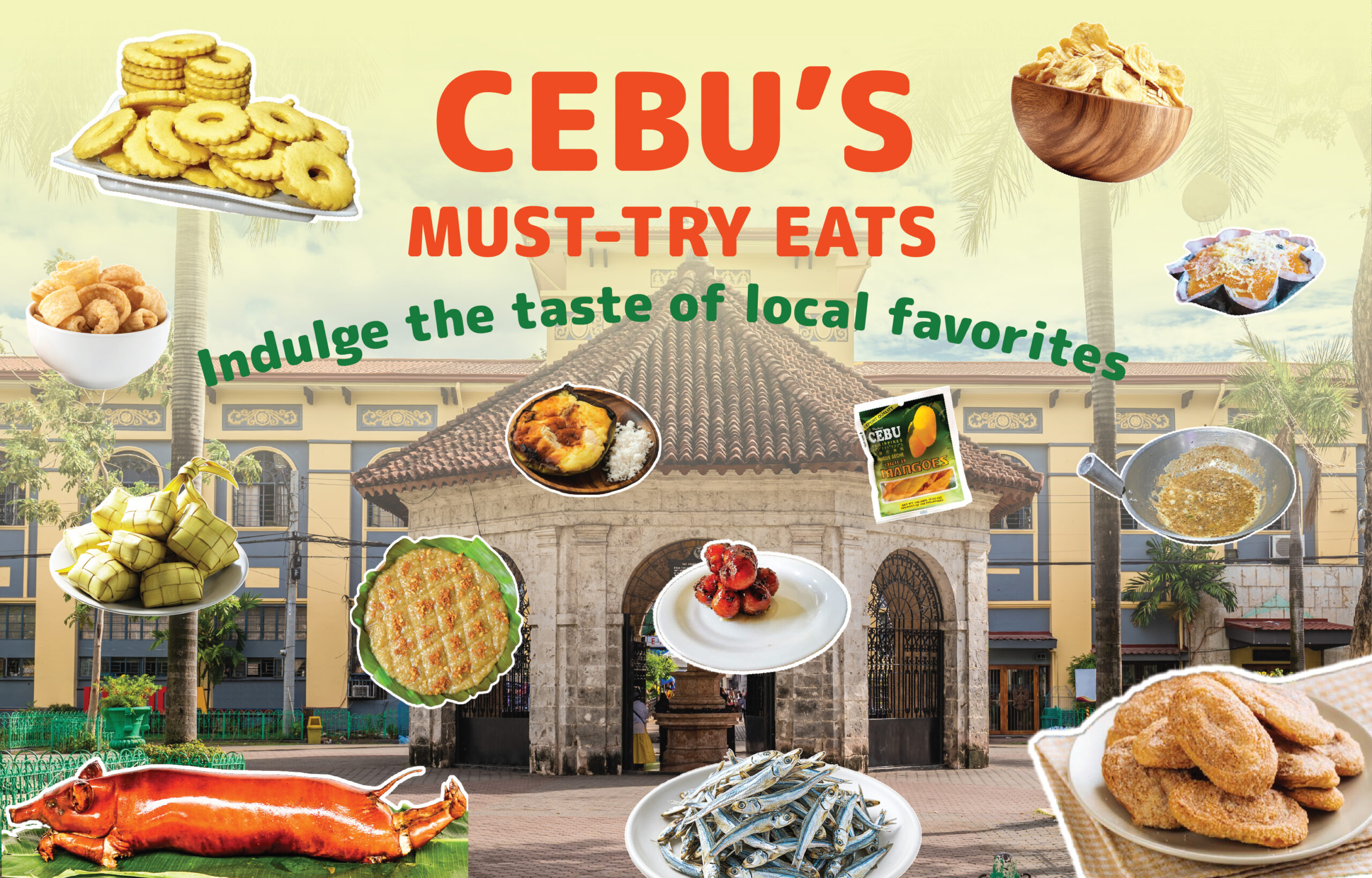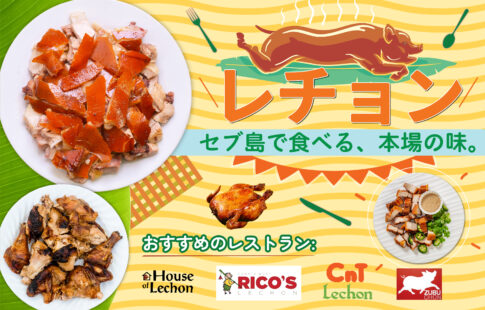What is a trip to Cebu without tasting its must-try delicacies?
From savory dishes to sweet treats, Cebu’s food culture is as rich and vibrant as its history.
These delicacies are more than just meals—they reflect the island’s traditions, creativity, and love for gatherings.
Whether you’re a first-time visitor or a returning guest, indulging in Cebu’s specialties is the best way to truly know the island and its people.
LECHON
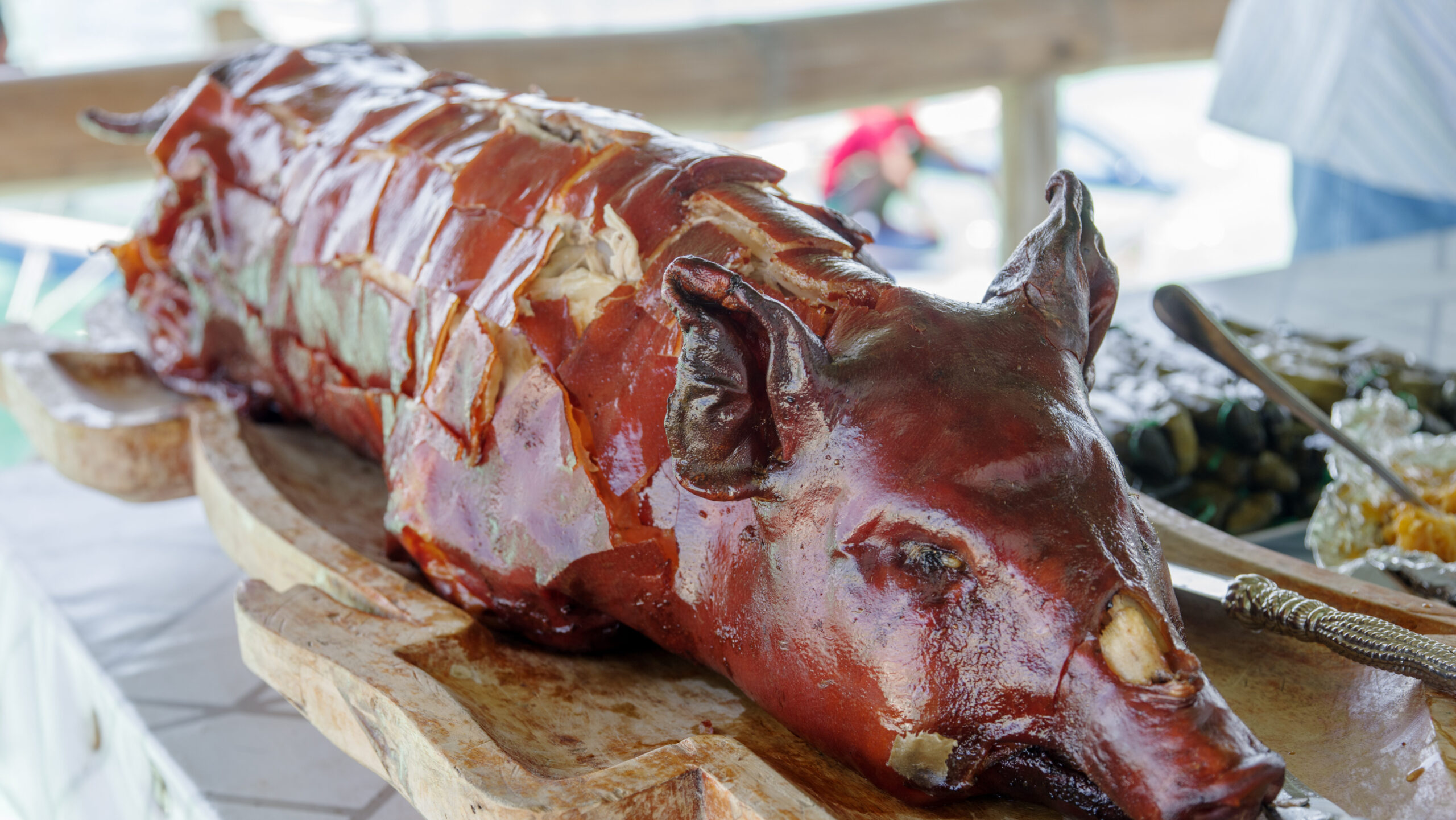
Your Cebu trip will never be complete without Lechon!
People call it as the best roasted pig in the Philippines. Believe it or not, this roasted whole pig is a symbol of FIlipino celebration.
Its origins trace back to pre-colonial times when pig roasting was part of ritual feasts.
Cooks marinate the pig with a mixture of local spices, garlic, lemongrass, and salt, then slowly roast it over charcoal until the skin turns perfectly glazed golden brown.
It’s taste is crispy, salty-sweet skin with juicy, savory meat that bursts with garlicky and herby flavors.
Where to buy:
Head to Carcar Public Market for authentic, budget-friendly lechon sold by the kilo. If you prefer famous names, try Rico’s Lechon, Zubuchon, or CNT Lechon in Cebu City. These spots are tourist-friendly and offer takeout options perfect for pasalubong.
DANGGIT
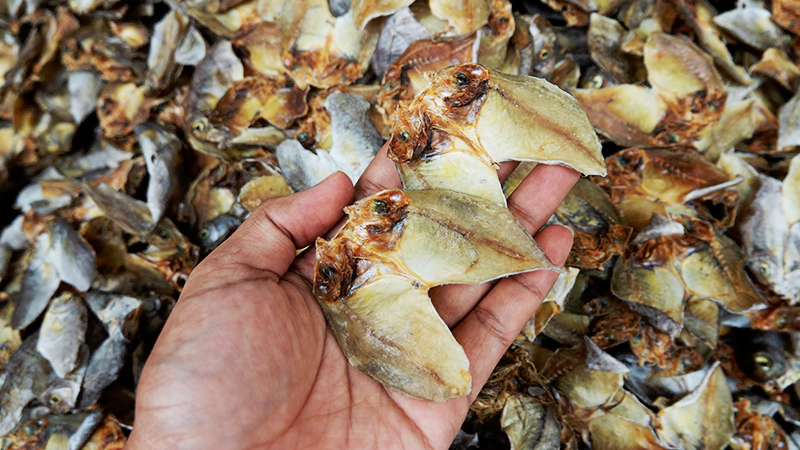
photo via Cebu Insights
Danggit has its roots in Cebu’s fishing communities, where they catch fish such as mackerel scad, anchovies, rabbitfish, flatfish, and so much more.
Coastal families traditionally prepared them to extend food supplies.
To make it, the fish split open, cleaned, salted, and laid out under the sun until it becomes light, flat, and crispy when fried.
It taste is intensely salty and savory, with a satisfying crunch that pairs perfectly wtih rice and vinegar dipping sauce. Cebuanos love it for breakfast, often calling it the best “silog” partner.
Where to buy:
Head to Taboan Public Market for authentic, budget-friendly danggit, where stalls sell it by the kilo along with other dried seafood.
For a more convenient pasalubong stop, try trusted shops like Melvin’s Dried Fish & Pasalubong Center or Cebu’s Best Danggit & Pusit in Cebu City. Many vendors also offer vacuum-sealed packs
PUSÓ
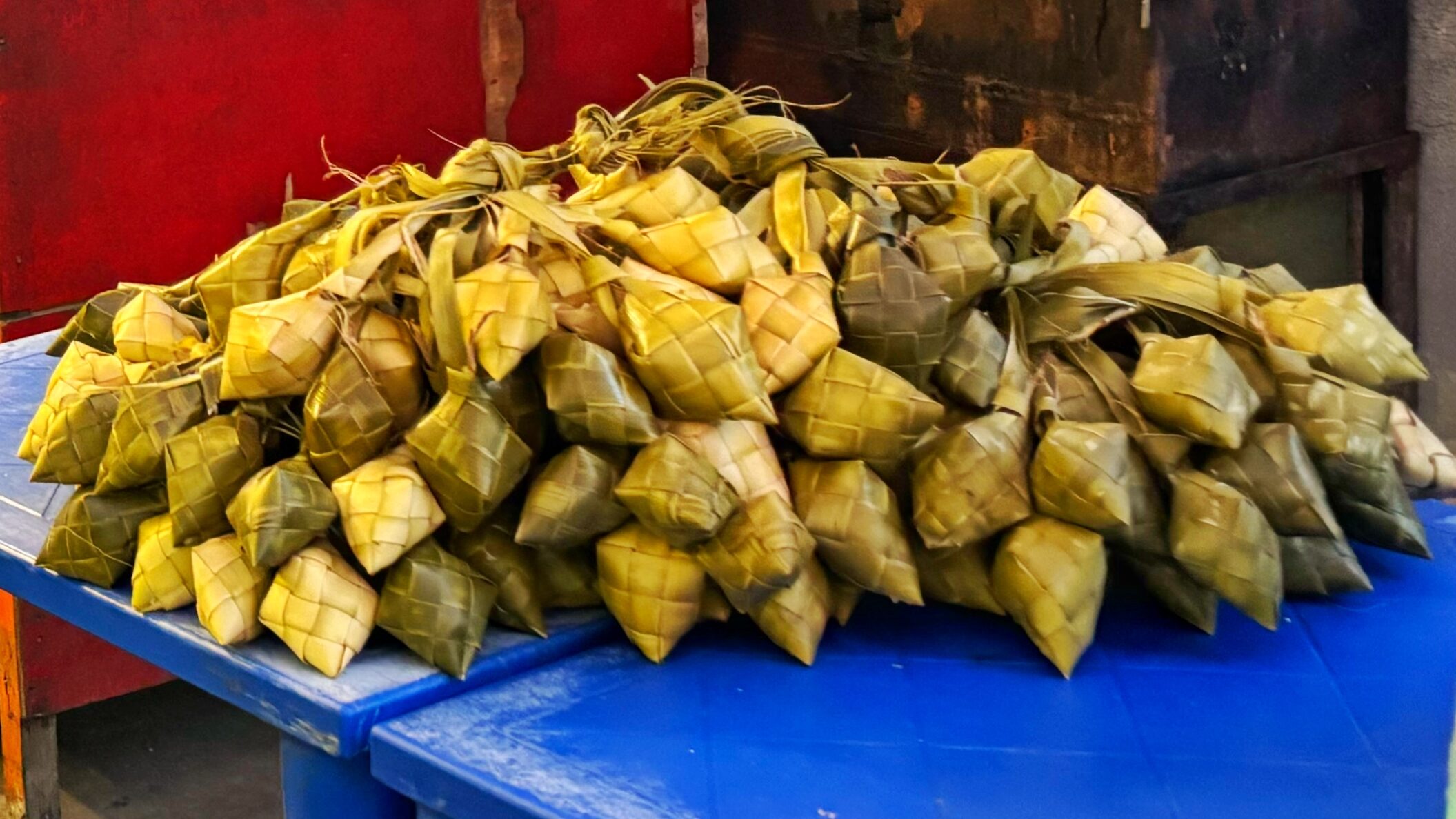
It is a dining essential of Cebuanos especially when paired with street foods and lechon.
Its origins trace back to pre-colonial seaferers who needed rice that was portable, hygienic, and easy to store during voyages. The woven palm leaf does not only kept the rice clean but also made it to carry.
To make it, cooks place rice inside intricately woven coconut or palm leaves shaped like small diamond pouches, then boil them until the grains expand and take the form of the casing.
It is simple yet comforting firm steamed rice with a subtle earthy aroma from the leaves.
Cebuanos love it because it is convenient, mess-free, and the perfect partner for fried foods!
Where to buy:
Head to barbecue stalls, siomai & grill joints around Fuente Osmeña Circle, Salinas Drive, and even in Sugbo Mercado—they almost always have puso hanging ready.
For pasalubong or bulk orders, try local suppliers like Gigi’s Poso in Cebu City. Many “pungko-pungko” (street food) vendors also sell puso alongside their skewers and sides
CHORIZO
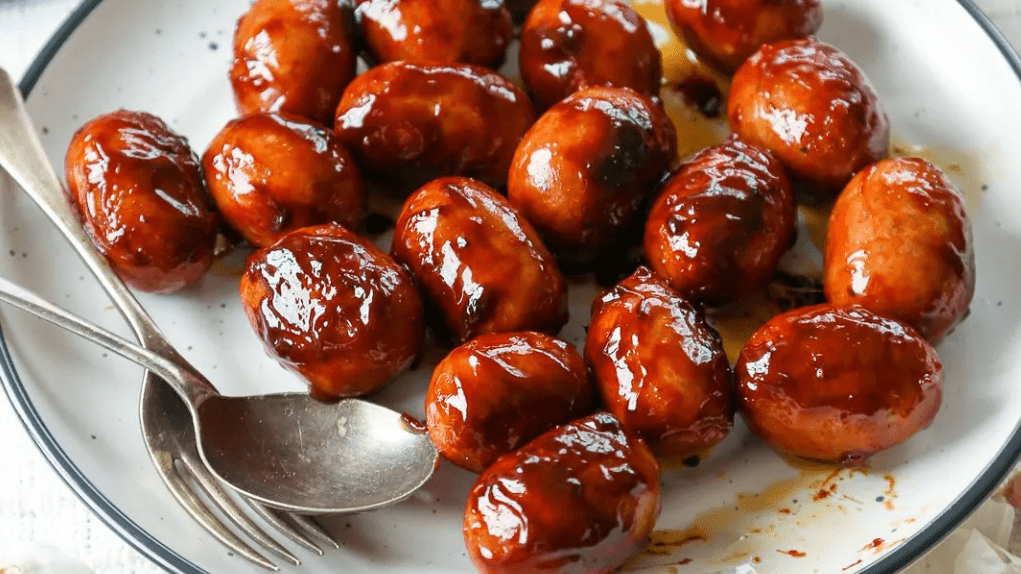
photo via Ang Sarap
This is one of the island’s mot beloved food, often spotted on skewers being grilled in smoky roadside stalls.
Its taste is sweet, savory, and perfectly grilled on skewers.
Chorizo uses ground pork mixed with fat for juiciness, seasoned with garlic, vinegar, soy sauce, sugar, and spices. The sweetness is its trademark, balancing savory and smoky flavor once grilled.
Where to buy:
Try Carbon Public Market for authentic, budget-friendly chorizo. You’ll also find it at night markets like Sugbo Mercado and local eateries across Cebu City.
TUSLOB BUWA
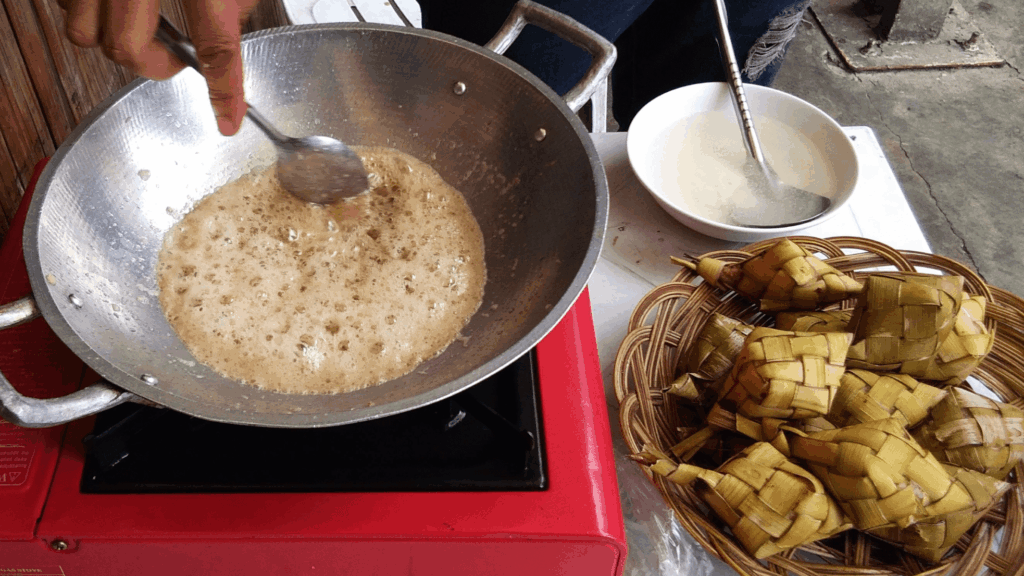
Tuslob buwa or “dip in bubbles” is a unique Cebuano street food originated in Pasil, Cebu City in 1950s.
What began as a low-cost street food for workers and locals has now become one of Cebu’s most talked-about delicacies.
This dish is made from pork brain, liver, onions, soy sauce, and seasonings, simered until it bubbles into a thick, savory sauce.
Its rich, umami flavor paired with puso (hanging rice), which you dip directly into the communal pan—messy, flavorful, and best enjoyed with friends.
Where to buy:
Tuslob Buwa is available in Cebu Food Markets yet there are also Tuslob Buwa restaurants like Azul, Tuslob Buwa sa Guadalupe, Loy’s Tuslob Buwa.
OTAP
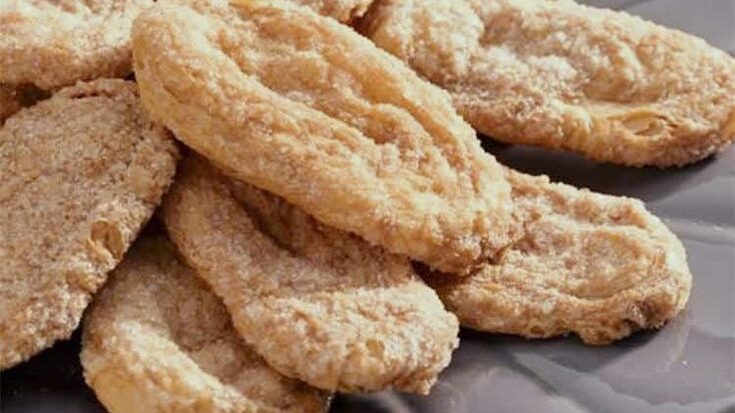
For sweet delicacies, Otap is one of Cebu’s most beloved pasalubong treats, with roots tracing back to the Spanish colonial period when pastries became part of local cousine.
It is made from flour, sugar, and shortening, then sprinkled generously with sugar before baking.
This flaky, sugar-coated puff pastry that crumbles with every bite is light, sweet, and perfect to pair with coffee.
Where to buy:
The most popular brand is Shamrock Otap, available in pasalubong centers across Cebu and at the airport. You can also try Titay’s and supermarket versions for more options.
TORTA
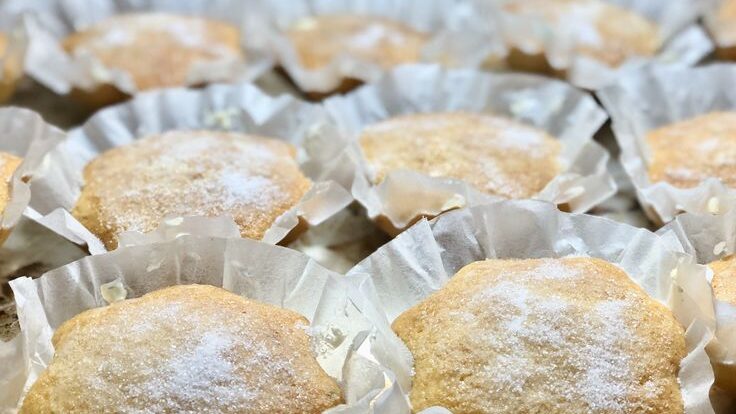
A soft sponge-like cake, a specialty from Argao, Cebu where it has been baked for generations.
Traditionally, it is made with tuba (fermented coconut wine) as a leavening agent, torta carries a distinct sweet-and-tangy flavor that sets it apart from other cakes.
Its rich fluffy texture and slighly caramelized top make it a favorite during tea time. To this day, torta remains a symbol of Argao’s culinary heritage and pride.
Where to buy:
Visit Argao for the most authentic versions, especially at Jessie’s Torta or Argao Royal Torta. Packaged torta is also available in pasalubong centers and bakeries across Cebu.
DRIED MANGOES
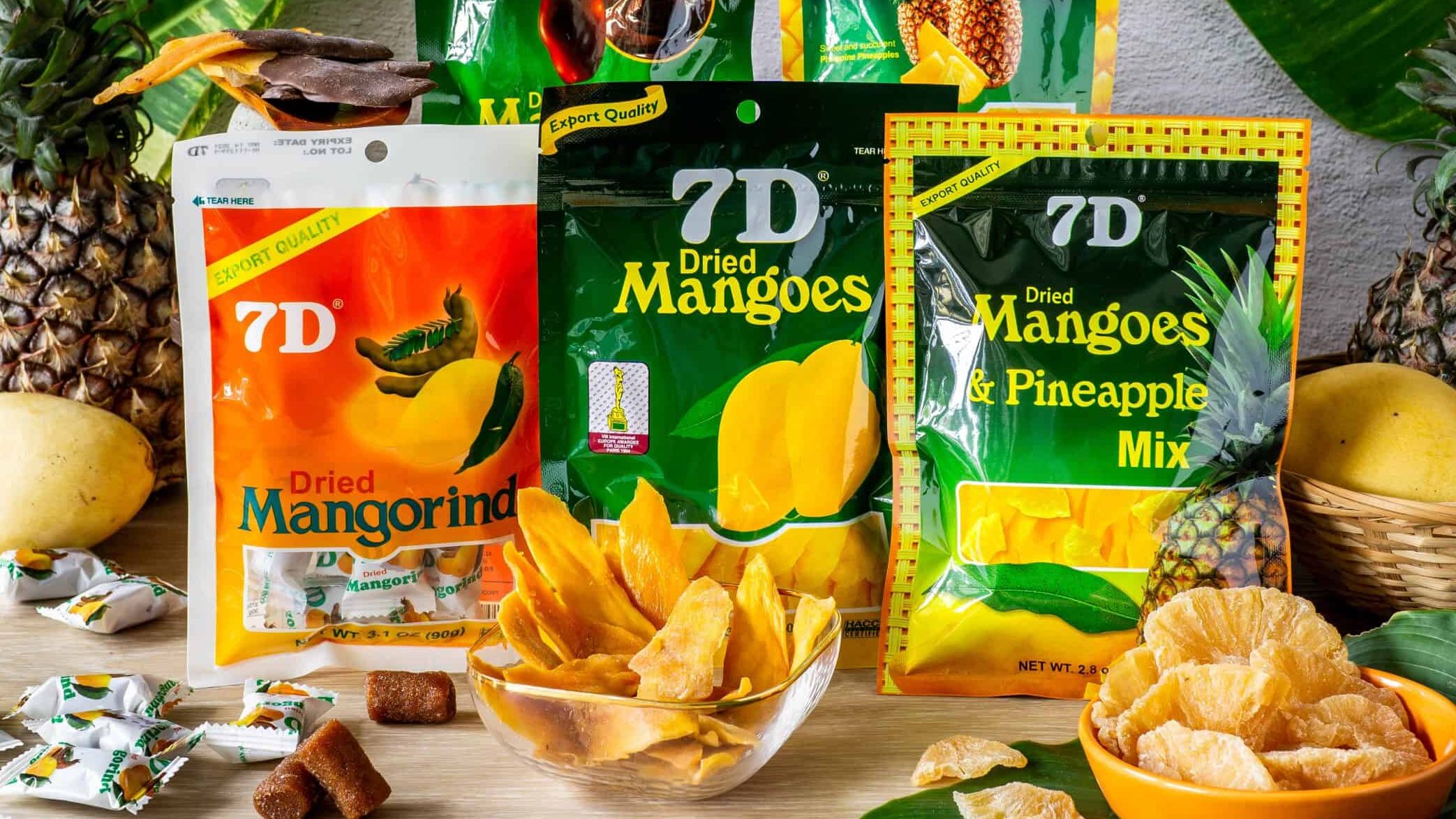
photo via East Asian Traders
In 1970’s, mango farmers sought ways to preserve the fruit’s sweet, golden flavor beyond its harvest season.
Dried mangoes are among the island’s most famous exports, enjoyed both locally and internationally. Through dehydration, the rich sweetness and tang of Cebu’s carabao mangoes are captured in chewy slices.
The taste is a balance of tropical sweetness and mild tartness, with a soft yet slightly leathery texture that makes it an addictive snack.
Making dired mangoes invloves selecting fully ripe mangoes, peeling, slicing, and drying them under controlled conditions to retain flavor, color, and nutrients.
Where to buy:
You can buy dried mangoes anywhere. From supermarkets, pasalubong centers, and local markets, to globally recognized brands like 7D, Profood’s Philippine Brand, and Guadalupe. They’re also widely available at Mactan-Cebu International Airport for travelers who want to take a taste of Cebu home.
BANANA CHIPS
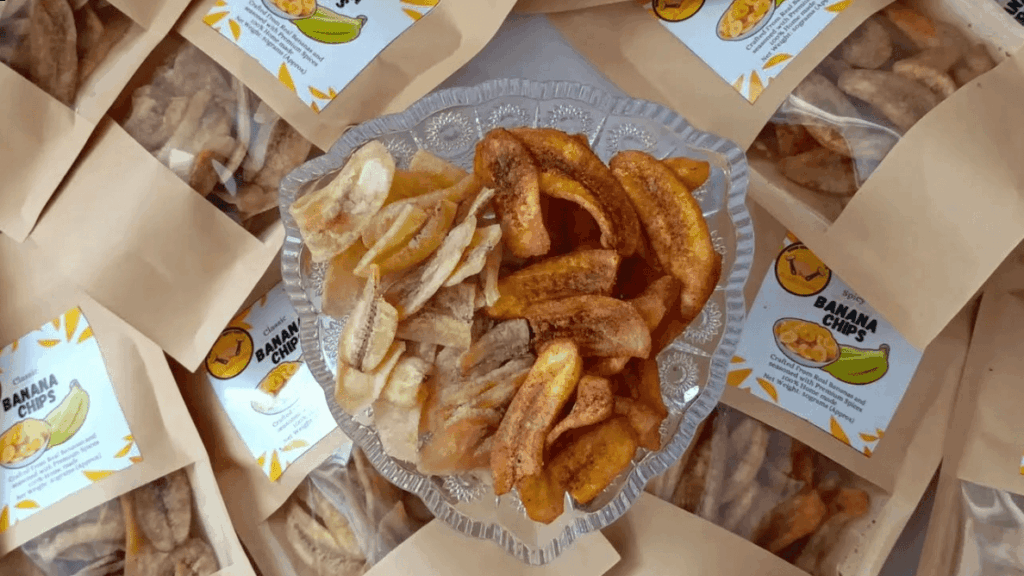
photo via al_zaiq
This snack is loved for its addicting crunch and long shelf life, making it a popular pasalubong for travelers.
Depending on the variety, you’ll taste either a caramelized sweetness or a salty-sweet balance. Because they are light, crisp, and easy to store, banana chips have become one of the most popular pasalubong items from Cebu.
Where to buy:
Head to Carbon and Taboan Public Markets for budget-friendly, freshly packed banana chips. You’ll also find them neatly sealed in pasalubong shops like Shamrock and supermarket chains across Cebu, perfect for gifting or snacking on the go.
ROSQUILLOS
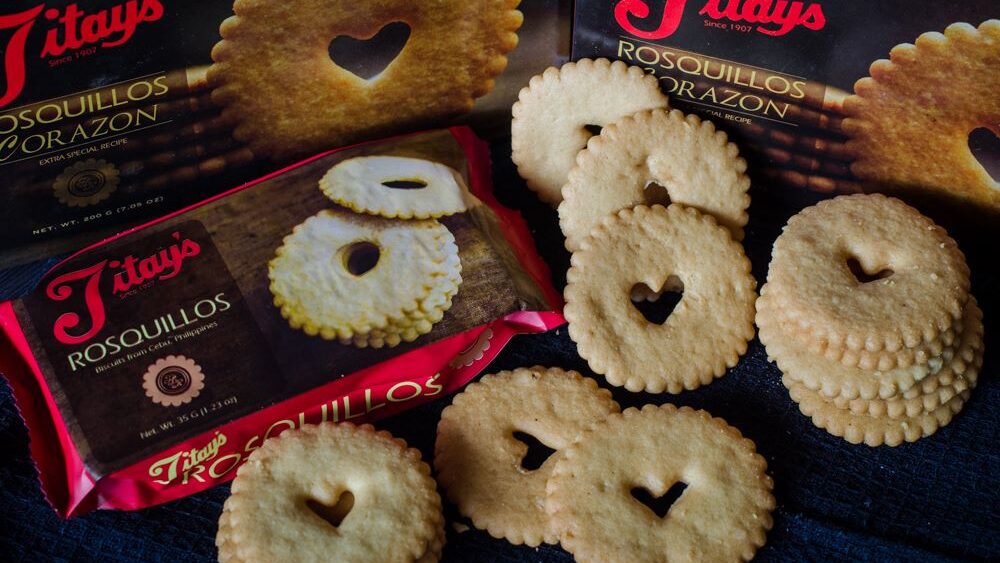
Cebuanos bake Rosquillos as iconic ring-shaped cookies—crisp yet buttery, with just the right sweetness to pair with coffee or hot chocolate.
First baked in 1907 by Margarita “Titay” Frasco in Liloan, these cookies quickly became a household favorite and a symbol of Cebuano hospitality.
Former Philippine President Sergio Osmeña named rosquillos, turning them into more than just a snack but a part of Cebu’s history.
Their delicate crunch and melt-in-your-mouth texture make them a timeless pasalubong.
Where to Buy:
The best place to get authentic rosquillos is at Titay’s in Liloan, where the tradition began. You’ll also find them in pasalubong centers, grocery stores, and souvenir shops all over Cebu.
BINGKA
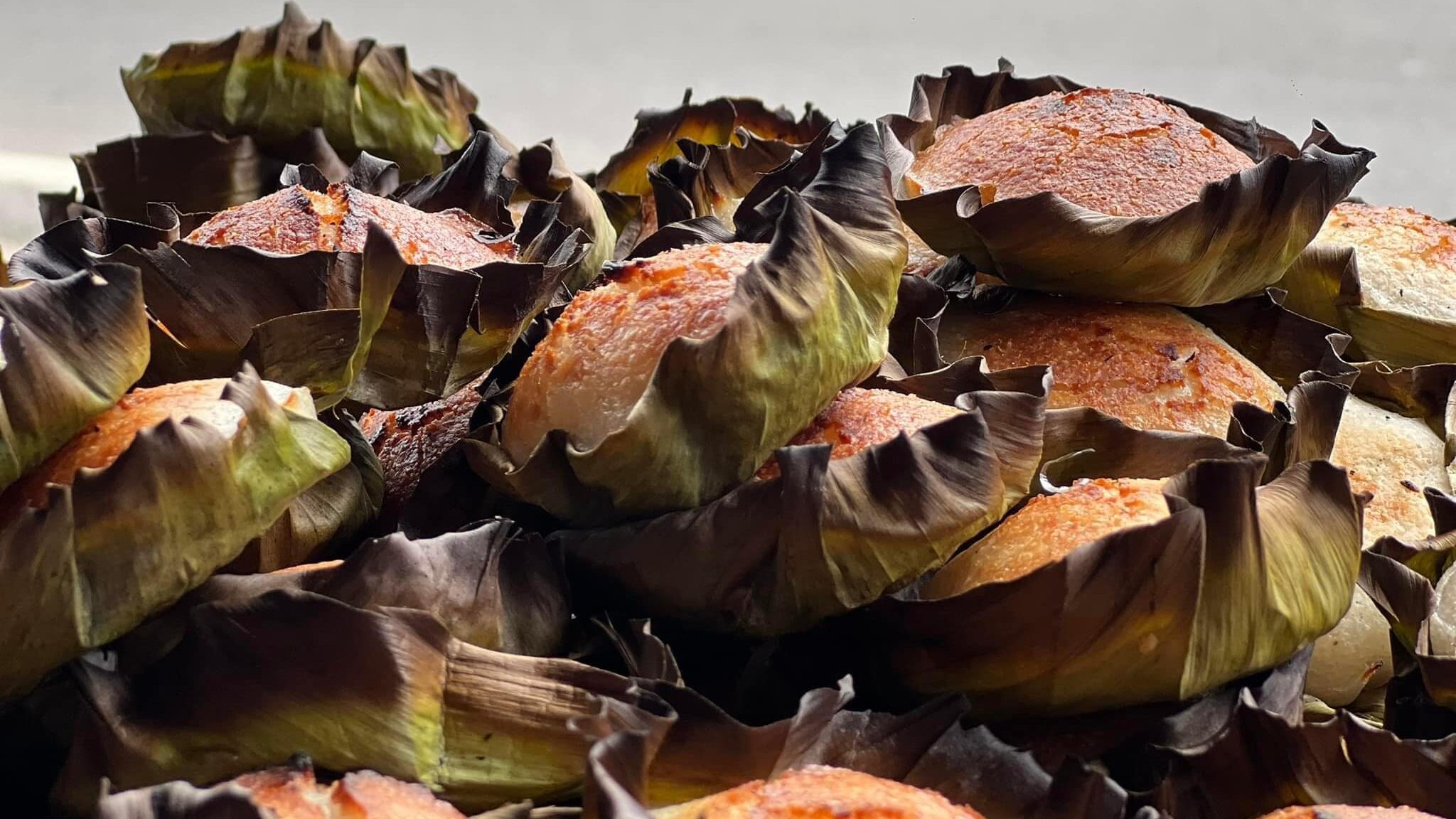
photo via Proud Bisaya Bai
Bingka, also called bibingka, has been a favorite Filipino snack for generations, with roots in traditional rice cake recipes brought during the Spanish colonial period.
Made from rice flour, coconut milk, sugar, and eggs, cooks pour the batter into banana leaf-lined clay pots, then bake it until the edges turn golden while the center stays soft and chewy.
Some versions are topped with slices of salted egg or grated coconut for extra flavor.
Locals enjoy bingka as a sweet merienda or snack, and travelers can find it at street stalls in Mandaue and Cebu City, especially in the evenings when it’s freshly made.
Where to buy:
Explore local markets and street vendors in Carmen for authentic bingka. While specific vendor names aren’t listed, Carmen’s vibrant food scene offers opportunities to enjoy this delicacy.
Cebu’s food scene is more than just a meal; it’s a journey through the island’s rich history, vibrant culture, and unforgettable flavors.
From the crispy lechon and savory chorizo to the sweet otap, torta, and bingka, every delicacy tells a story of the people and traditions that make Cebu unique. Experience these treats yourself and let each bite bring you closer to the heart of the island.
Make your Cebu food adventure effortless and unforgettable by checking out CSP Travel and Tours’ packages. We’ll guide you to the best spots, hidden gems, and iconic favorites so you can taste, explore, and enjoy Cebu like a true local!
Wanna learn more about Cebu? Read more on our Blogsite : CSP Navi

